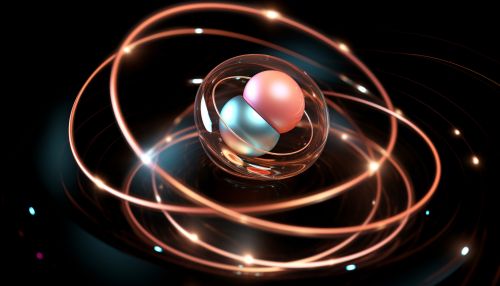Quantum Computing with Electron Spins
Introduction
Quantum computing is a rapidly evolving field that leverages the principles of quantum mechanics to perform computations. One of the key components of a quantum computer is the quantum bit, or qubit, which can exist in multiple states simultaneously, thanks to the property of superposition. While there are several ways to implement qubits, this article will focus on the use of electron spins in quantum computing.


Electron Spin in Quantum Mechanics
In quantum mechanics, the spin of an electron is a form of intrinsic angular momentum that is separate from the angular momentum due to its orbital motion. The spin of an electron can take one of two values: up or down, often denoted as |↑> and |↓>. This property makes electron spins suitable for use as qubits in a quantum computer.
Spin-based Quantum Computing
Spin-based quantum computing is a type of quantum computing that uses the spin states of electrons to represent and manipulate qubits. This approach has several advantages, including long coherence times and the potential for high-density qubit arrays.
Qubits and Quantum Gates
In a spin-based quantum computer, each qubit is represented by the spin state of an electron. Quantum gates, which are the basic operations in quantum computing, are implemented by manipulating these spin states. This can be achieved through various methods, such as the application of magnetic fields or the use of Quantum Electrodynamics (QED).
Coherence and Decoherence
One of the key challenges in quantum computing is maintaining the coherence of qubits. Coherence refers to the ability of a qubit to maintain its quantum state over time. Decoherence, on the other hand, is the loss of this coherence due to interactions with the environment. Electron spins have relatively long coherence times, which makes them a promising candidate for quantum computing.
Techniques for Manipulating Electron Spins
There are several techniques for manipulating electron spins in a quantum computer. These include the use of magnetic fields, electric fields, and optical methods.
Magnetic Fields
Magnetic fields can be used to manipulate the spin states of electrons. This is often achieved through the use of a technique known as Electron Spin Resonance (ESR), which involves applying a magnetic field to an electron and then using a microwave pulse to flip its spin state.
Electric Fields
Electric fields can also be used to manipulate electron spins. This is typically achieved through the use of a technique known as Electric Dipole Spin Resonance (EDSR), which involves applying an electric field to an electron to change its spin state.
Optical Methods
Optical methods for manipulating electron spins involve the use of light to change the spin state of an electron. This can be achieved through a variety of techniques, including the use of circularly polarized light or the application of a strong laser pulse.
Applications of Spin-based Quantum Computing
Spin-based quantum computing has a wide range of potential applications, from cryptography and data security to materials science and drug discovery.
Quantum Cryptography
Quantum cryptography is a field that uses the principles of quantum mechanics to secure communications. Spin-based quantum computers could potentially be used to implement quantum key distribution protocols, which are theoretically secure against any form of eavesdropping.
Quantum Simulation
Quantum simulation is another potential application of spin-based quantum computing. This involves using a quantum computer to simulate the behavior of quantum systems, which could be useful in fields such as materials science and drug discovery.
Challenges and Future Directions
Despite the potential advantages of spin-based quantum computing, there are several challenges that need to be overcome. These include the difficulty of isolating qubits from their environment to prevent decoherence, and the need for precise control over electron spins.
Looking ahead, research in spin-based quantum computing is likely to focus on developing new techniques for manipulating electron spins, improving the coherence times of qubits, and scaling up quantum computers to handle more complex computations.
See Also
Quantum entanglement Quantum error correction Quantum annealing
